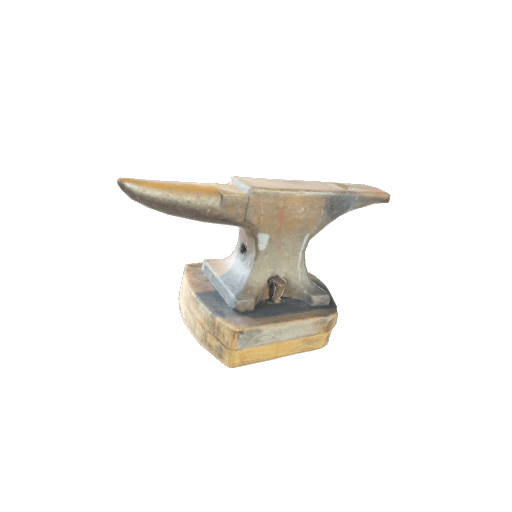Anvil
The anvil is a metal block on which the blacksmith places the hot metal to be forged with his tools. This heavy block of iron weighs from 200 to 300 pounds (90 to 135 kg).
This type of anvil appears in the 19th century. Its characteristics meet the needs of the blacksmith’s and farrier’s tasks; gradually, these two professions end up being carried out by the same person in rural areas. This anvil consists of a smooth, flat table; a beakhorn stake (a curved, pointed end for working horseshoes); and two holes. These cavities, one of which is square and the other round, are used to insert tools into the anvil: the square one (hardy hole) holds the hardy for cutting metal and the round one (pritchel hole) holds different types of piercing tools.
Essential tool of the blacksmith, the anvil is fixed on a base (wooden block) near the fire. Its height is determined by the craftsperson’s height. Its base, sometimes wrapped with a leather belt to hang tools, is often the oldest item in the forge. The anvil can be replaced, but the base is preserved: It becomes the heart of the forge.
References
Date: 1850–1950
Origin: North America
Owner: Forge Saint-Laurent. Saint-Anaclet-de-Lessard.
Sources:
Dupont, J.-C. (1979). L’artisan forgeron [The craft smith]. Presses de l’Université Laval; Éditeur Officiel du Québec.
Dupont, J.-C. (2006, February 6). Blacksmithing. In The Canadian Encyclopedia. Retrieved July 22, 2022, from https://www.thecanadianencyclopedia.ca/en/article/blacksmithing
Tremblay, R. (n.d.). Blacksmith’s Trade in the Province of Quebec. In Encyclopedia of French Cultural Heritage in North America. Retrieved July 22, 2022, from http://www.ameriquefrancaise.org/en/article-427/Blacksmith%E2%80%99s_Trade_in_the_Province_of_Quebec.html
